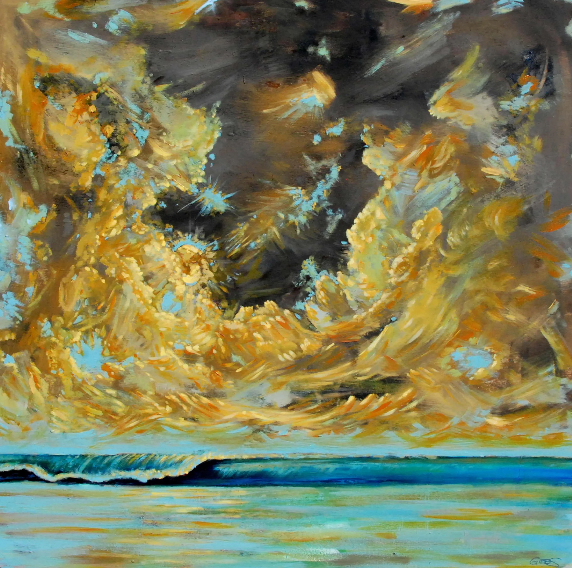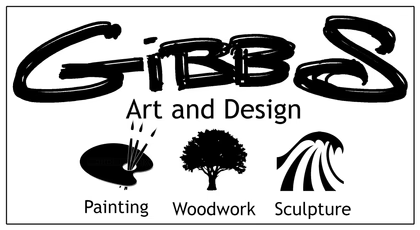
How to Read a Painting: Tips for Art Lovers
Share
Looking at a painting is one thing - truly reading it is another. Many people step into a gallery or browse an artist’s portfolio online and feel unsure about what they should notice or how to interpret what they’re seeing. The good news is that you don’t need an art degree to connect deeply with a work of art. Reading a painting is about slowing down, observing carefully, and allowing the piece to speak to you.
I believe every painting tells a story, whether it’s rooted in history, personal emotion, or abstract exploration. By learning how to “read” a painting, you can discover layers of meaning, technique, and beauty that might otherwise go unnoticed. Here are some practical tips to help art lovers engage with paintings on a deeper level.
Start With First Impressions
Before diving into details, take a step back and let your first impressions surface. How does the painting make you feel? Is it calming, unsettling, joyful, or mysterious? These immediate reactions are important because they reflect your personal connection to the work. Art is not just about technique; it’s also about the emotions it evokes.
Ask yourself:
-
What words come to mind when I look at this?
-
Do the colors affect my mood?
-
What story does this painting seem to tell at first glance?
Trusting your instincts helps you establish a personal relationship with the artwork before analyzing it further.
Observe the Use of Color
Color is one of the most powerful tools an artist has. Warm tones like reds, oranges, and yellows often create feelings of energy, passion, or warmth, while cooler shades like blues and greens may bring calmness, sadness, or distance.
Look at how the artist combines colors:
-
Are they bold and contrasting, or soft and harmonious?
-
Do certain colors stand out more than others?
-
Is color used to highlight a focal point or guide your eyes around the canvas?
Understanding color choices allows you to see not just what is painted, but how the artist wants you to feel.
Wood Gave Us Surfing Grains - Nathan Gibbs Art Print
Pay Attention to Composition
Composition is the arrangement of elements within a painting. It’s how the artist organizes shapes, figures, and space to create balance or tension. Even if you’re not trained in art, you can still ask questions that reveal compositional choices:
-
Where does my eye go first?
-
Are objects centered, or do they lead me off the canvas?
-
Is the scene symmetrical, or intentionally uneven?
Good composition guides your journey through the painting. It directs attention, creates rhythm, and shapes the overall impact of the work.
Look for Symbolism and Storytelling
Many paintings include hidden meanings or symbols that add depth to the visual story. A bird in the background, the choice of clothing, or even the way light hits a subject can all carry symbolic weight.
Ask yourself:
-
What objects appear, and why might they matter?
-
Does the painting reference history, literature, or mythology?
-
Could this be a self-portrait in disguise, or a commentary on society?
The more you explore, the more you uncover layers of meaning beyond the obvious.
Notice the Brushwork and Technique
Every artist has a unique style, and brushwork can tell you a lot about how the painting was created. Thick, textured strokes may express energy or intensity, while smooth, blended strokes might suggest calmness or polish.
Looking closely at technique can also give insight into the artist’s process:
-
Is the paint applied quickly and expressively, or with careful precision?
-
Do you see underpainting or layers building up the final image?
-
Does the surface have texture, or is it flat and smooth?
This level of detail helps you appreciate the craftsmanship behind the artwork.
Engage With the Artist’s Intent - but Trust Your Own
Artists often create with a specific message, theme, or emotion in mind. Reading the artist’s statement or researching the context of a piece can provide valuable insight. However, your personal interpretation matters just as much.
Art is meant to be experienced. Your background, emotions, and imagination influence what you see and how you connect with a painting. There’s no single “correct” way to read a painting, only a balance between understanding the artist’s vision and trusting your own response.
Take Your Time
Perhaps the most important tip is to slow down. In a world where we scroll quickly through images, giving yourself the time to sit with a painting can be transformative. The longer you look, the more details, emotions, and connections you’ll discover.
Whether you’re visiting a gallery, browsing an online collection, or enjoying original works in your own home, taking the time to truly read a painting deepens your appreciation of art.
Final Thoughts
Learning how to read a painting isn’t about memorizing technical jargon, it’s about being open, observant, and curious. By paying attention to color, composition, symbolism, technique, and your own instincts, you’ll uncover richer stories and connections within the artwork.
At Nathan Gibbs Art, I strive to create paintings that invite this kind of thoughtful engagement. Each piece is designed to spark emotion, reflection, and conversation. If you’re ready to explore art that speaks to you on multiple levels, I invite you to browse my collection of original works and prints.
Take your time, trust your instincts, and let the paintings tell their stories.

